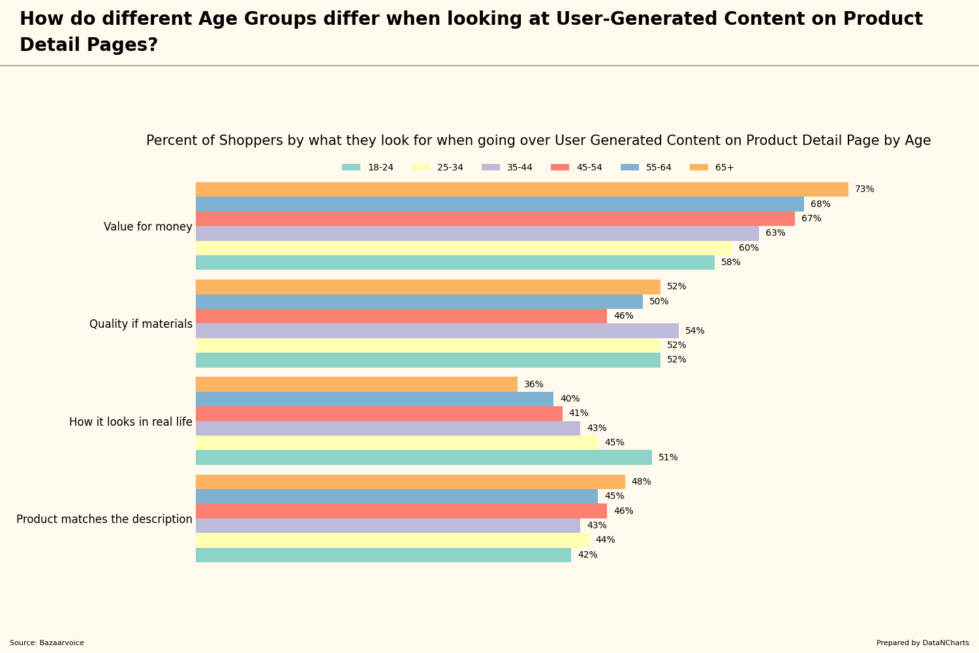Data Highlights
Value for money in user-generated content gains importance with age, starting at 58% for ages 18-24 and increasing to 73% for those 65+.
Interest in the quality of materials remains fairly consistent across age groups, with slight variations, hovering around 50%.
The need for products to match their description slightly increases with age, ranging from 42% in the 18-24 age group to 48% in the 65+ group.
The importance of how products look in real life in user-generated content decreases with age, starting at 51% for 18-24-year-olds and dropping to 36% for those 65 and older.
Scope
In this insight brief, we explore the varying priorities different age groups place on user-generated content (UGC) in e-commerce. Understanding these differences is crucial for tailoring online shopping experiences to diverse consumer needs.
Value for Money: A Growing Priority with Age
For younger shoppers, aged 18-24, value for money in UGC is important, but it becomes even more crucial as shoppers age. The percentage valuing this aspect jumps from 58% in the youngest group to 73% among those 65 and older. This shift reflects changing financial perspectives over a lifetime.
Consistency in Material Quality Across Ages
Interestingly, the interest in the quality of materials in UGC remains relatively stable across all age groups. It varies slightly but hovers around the 50% mark for all ages. This suggests a universal concern for product durability and effectiveness regardless of age.
Accuracy of Product Description Gains Slight Emphasis with Age
The importance of products matching their online descriptions in UGC sees a gradual increase with age. Starting at 42% in the 18-24 bracket, it peaks at 48% in the 65+ age group. Older shoppers show a marginally higher preference for accuracy in descriptions.
Real-Life Appearance: More Crucial for Younger Shoppers
Younger age groups, particularly those 18-24, place a higher emphasis on how products look in real life within UGC, starting at 51%. This concern declines with age, dropping to 36% in the 65+ category. This trend highlights a generational shift in visual preferences.
Insights and Opportunities
This data reveals key insights into how age affects the valuation of UGC. As shoppers age, their focus shifts from the real-life appearance of products to aspects like value for money and description accuracy. For brands, this means adapting product detail pages to these preferences can enhance engagement across different demographics. By tailoring UGC to reflect these age-specific priorities, brands can create more resonant and effective online shopping experiences.
